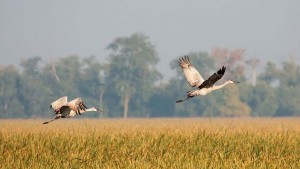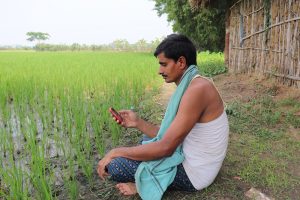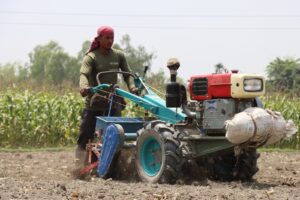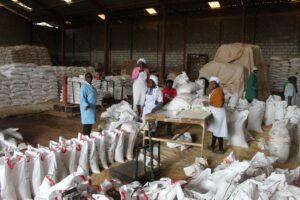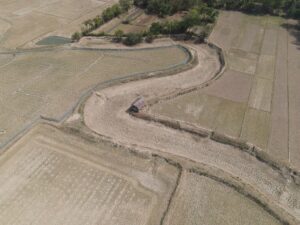
The human population and demand for food are projected to increase in the next 40 years. With changes in land use, less agricultural land needs to produce more food—especially rice, the basic food of half of the world’s population. Beyond these challenges are climate change and the looming water scarcity, which, if not overcome, will adversely affect rice production.
The historic sequencing of the rice genome completed in 2005 radically changed how scientists approach challenges in rice science. Published in the journal Nature, the final sequence of the rice genome was the product of a global collaboration coordinated by the International Rice Genome Sequencing Project (IRGSP). It has been called a “gene revolution”—a milestone for rice improvement programs and a revolutionary landmark in rice science (see The gene revolution, pages 15-18 of Rice Today Vol. 5, No. 1). Having a high-quality reference sequence of rice has sparked many gene discoveries that promise to improve the efficiency of rice breeding.
Precision breeding

Over the years, traditional plant breeding has evolved. From just selecting the best-performing plants in the field for the next generation, new tools have evolved that enable scientists to rapidly deliver varieties tailored to the needs of farmers. One of these tools is marker-assisted selection (MAS), a new “precision breeding” method (see On your mark,get set, select on pages 28-29 of Rice Today Vol.3, No.3 ). This shortens the breeding process by precisely moving specific traits from one variety into another through the use of molecular markers—DNA landmarks along the rice chromosomes. In this way, parts of the rice genome (the plant’s genetic makeup) that control characteristics (e.g., submergence tolerance, drought tolerance, disease resistance) can readily be identified and the undesirable ones can be avoided during the selection process.
Through marker-assisted selection, the SUB1 gene, which confers flood tolerance, was transferred into Swarna, a popular variety grown on millions of hectares in India, while still retaining Swarna’s good traits such as high yield, high grain quality, and pest and disease resistance. The rapid improvements in marker technology underscore the value that gene discovery has for developing and delivering new varieties. The megavarieties with the SUB1 gene are a good example of how farmers can rapidly benefit from genetic advances (see Scuba rice).
IRRI scientists continue to work on gene discovery and marker-assisted selection for other important traits. Important work that is poised for revolutionary developments involves genes for salt and drought tolerance, and genes for tolerance of phosphorus deficiency and resistance to pests such as brown planthopper and diseases such as blast, bacterial blight, and tungro virus.

Sequencing of diverse rice varieties
Although having a complete sequence of the rice genome was an essential beginning, the fact is that only a single genome of rice cultivar Nipponbare was sequenced out of thousands of diverse rice varieties grown around the world. More research is urgently needed to further explore DNA sequence variation across other important rice varieties. IRRI’s OryzaSNP project, a collaborative effort with other international scientists, aims to discover genetic variation in Oryza sativa, cultivated Asian rice. Researchers examined the fine-scaled differences among 20 genetically diverse rice varieties by studying their single nucleotide polymorphisms or SNPs (pronounced as “snips”). SNPs are the genetic variation between a pair of DNA nucleotides in different varieties. Mapping these differences among varieties could help reveal and pinpoint the genetic basis behind rice’s diverse traits, including stress tolerance, early maturity, high-quality grains, and increased yield, among others. These traits are essential ingredients for breeding new improved varieties. The OryzaSNP data set, the largest collection of SNP data for rice, is now being used by many researchers worldwide.
New advances in next generation sequencing methods also promise to accelerate the decoding of many more rice genomes in the future. “In other words, we will have the DNA sequence of thousands of rice varieties, eventually encompassing the entire gene bank of rice,” says Dr. David Mackill, IRRI plant breeder. “This would allow us to find all the forms of the genes available and how these affect the traits of the rice plant.”
This will provide a pool of SNPs that will enable rapid genotyping of diverse rice germplasm. The availability of low-cost SNP markers will then enable rice breeders to take advantage of more efficient MAS techniques for rapid variety development.
_______________________________________
Ms. Reyes is the managing editor of Rice Today.
Ms. Chin is marketing manager of Special Events Group, IIR Exhibitions Pte. Ltd. in Singapore.





